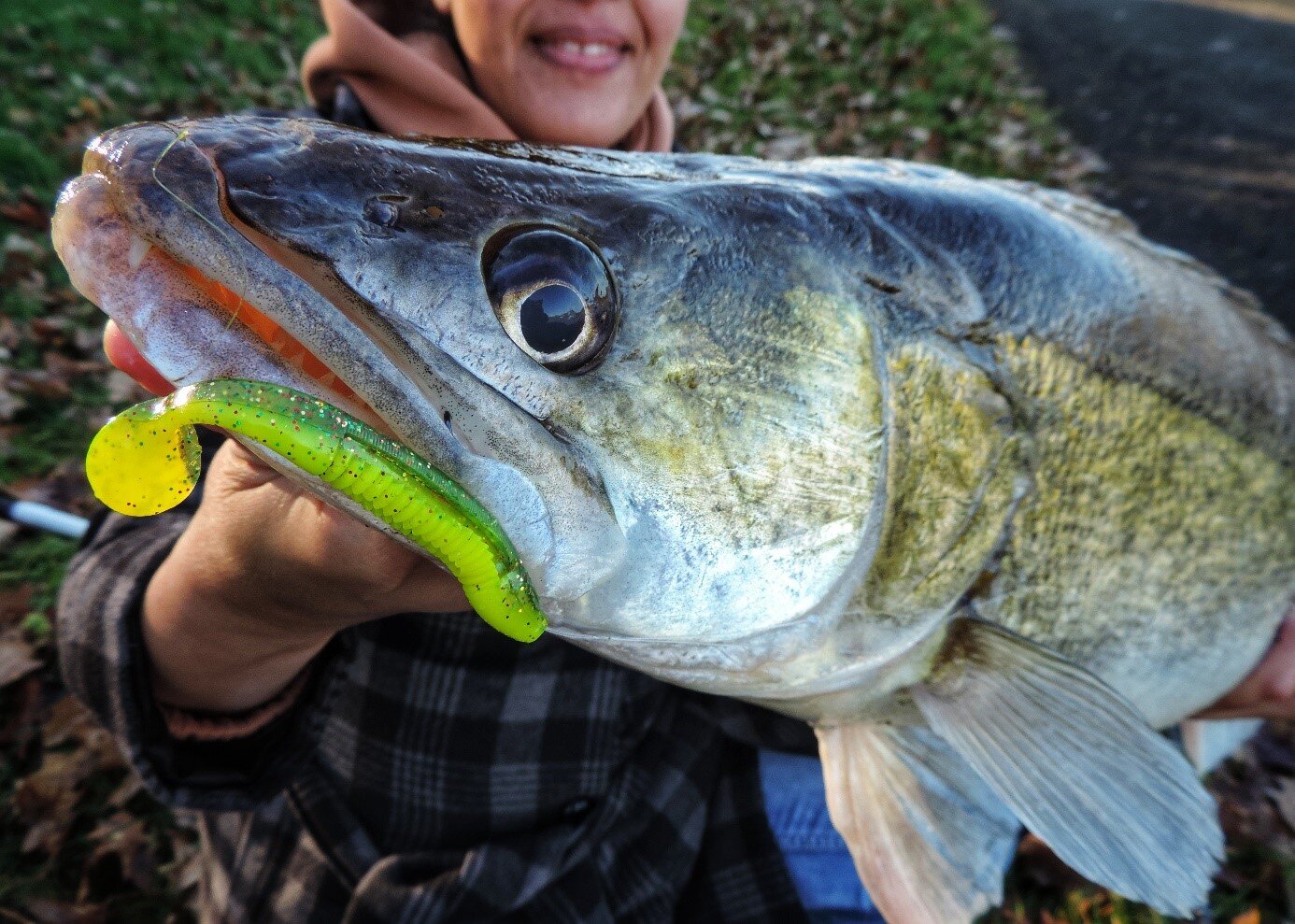Targeting Big Zander
Text & photo’s by Ilyas Schellekens - BBZ Contributor
Title photo - this size we like to call a CASTLE. With her brute force she put my materials to the ultimate test.
The Kempic Canals
Between 1820 and 1940 seven canals were made in Belgium. They are primarily used for shipping raw materials and belong to my favorite fishing spots to target big zanders. However, the looks of these canals are rather boring, you have got to love it and with the right timing and approach these beautiful predators are reachable for any angler.
When is the perfect time? And what is my approach?
Early pre-spawn is the best time, the reason is that large females will go and feed on the spawning areas to eliminate any threat for their offspring.
Softbaits on a jig and dropshot rig is what I use most. To achieve a slow decent which is crucial I go as light as possible. Late winter the water is still cold and that makes the fish move slow so a slow presentation is a must!
3/16 or ¼ oz jighead and ¼ or ⅜ oz dropshot lead work best for me. The distance between the hook and dropshot lead I use fishing these canals is 2 feet. 28/00 (test 11,6lbs) fluorocarbon I use for tying the dropshot rig. The leader of my jigging rod is thicker 35/00 fluorocarbon.
Big zander don’t feed very close to the bottom so a slightly higher presentation of the bait is necessary to make sure your softbait is in the “STRIKE ZONE”.
This Gamakatsu hook, F314 size2, has a long shank so the hook point is further backwards in the softbait and I prefer this in cold and dirty water.
A floating softbait for the dropshot rig is better in these conditions as it slows down the decent and gives the fish more time.
The mighty head-shakes from a fish like this stayed a long time in my memory. The weight on the end of your line predicts a capital catch, so take your time when fighting the fish.
Zainab was able to break her personal record with this stunning zander of 35,8 inches.
When the boat traffic is busy the baitfish as well as the predators are forced to move around so the chance for a bite increases!
Current is an important factor and is influenced by 3 things:
Boat traffic
Rain
Locks
Another thing I always pay attention to is cormorants because they show the presence of baitfish.
Mussel banks are a source of food for many fish, crabs, lobsters, ... and these are all on the menu of the zander. Never ignore this indication.
Catch your dream!
Every year the perfect time changes according to the temperatures so persevere in your technique. Don’t expect to catch numbers and be prepared to catch nothing at all. As long as you are on the right spot it is just a matter of time.
Switch colors of softbait and weights according to the slight changes in current and water clarity. Cold dirty water makes the fish in general less active but increases the chance for the biggest fish to have a chance to grab your lure before it is snatch by a smaller and often faster predator.
Make sure your materials are perfectly matched for the brute force of a big zander and especially the drag shouldn’t be too tight.
Wet lines and good luck!
So, remember!
When you are targeting big zanders:
Be early on the spawning areas
Fish your bait higher from the bottom (approx. two feet)
Fish really slow
The big females are so important for the offspring. In Belgium it is forbidden to kill a zander over 70cm with this rule they want to protect the specie. The eggs of big fish are of higher quality and the newly born hatch is more resistant during the first weeks of their lives. Chartreuse is the best choice in dirty water and the Spro Komodo shad three inches is one of my favorite floating softbaits.
A dropshot rig, another American technique that made its way over to Europe, and I think it is here to stay.








